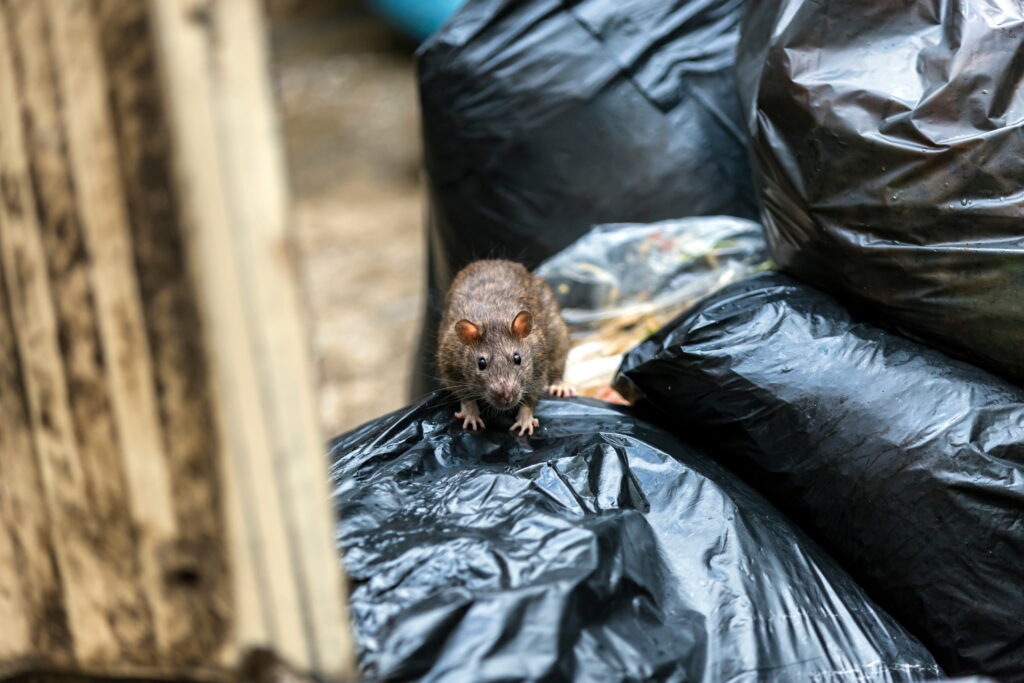Pest infestations can be a distressing issue for both tenants and landlords. Whether it’s rodents, insects, or other unwelcome guests, knowing who is responsible for resolving the problem and covering the costs is important. In this article, we explore the factors that determine liability, providing guidance for both landlords and tenants in Northwich and Congleton.

Understanding Legal Responsibilities
In the UK, both tenants and landlords have legal responsibilities concerning the maintenance and upkeep of a rental property. When it comes to pest control, liability typically depends on the cause of the infestation and the condition of the property.
Landlords are legally required to ensure the property is fit for habitation under the Homes (Fitness for Human Habitation) Act 2018. This means that if pests are present due to structural defects, poor maintenance, or pre-existing issues, it falls on the landlord to resolve the problem. However, if the infestation is caused by tenant behaviour, they may be required to address the issue at their own expense.
When is the Landlord Responsible?
Pre-Existing Pest Issues
If a tenant moves into a property that already has a pest infestation, the landlord is responsible for taking appropriate action. It is the landlord’s duty to ensure that the property is pest-free before new tenants take up residence. This includes arranging pest control services if necessary and covering any associated costs.
Structural Issues Leading to Infestations
Pests often gain access to properties due to structural problems, such as gaps in walls, broken vents, or faulty drainage. If an infestation is linked to such defects, it is the landlord’s responsibility to address both the pest issue and the underlying cause. For example, if rats or mice are entering through damaged brickwork, the landlord must repair the damage and arrange for pest control.
Shared or Communal Areas
In buildings with shared spaces, such as flats or apartments, pest problems originating from communal areas are generally the landlord’s responsibility. If, for instance, cockroaches are found in multiple units due to poor maintenance in stairwells or shared bin areas, the landlord will need to organise and pay for pest control.
Legal Obligations for Repairs
Landlords must respond to repair requests promptly, as delaying necessary fixes can lead to or exacerbate pest problems. For example, a leaking roof may create damp conditions ideal for insect infestations. If a landlord neglects repairs and an infestation results, they are responsible for both fixing the issue and covering the pest control costs.
When is the Tenant Responsible?
Poor Hygiene and Negligence
If an infestation arises due to the tenant’s poor hygiene or negligence, they will likely be held responsible. This includes situations such as:
- Leaving food out or not disposing of rubbish properly, attracting rodents or insects.
- Failing to clean up spills or regularly empty bins, leading to infestations of ants or cockroaches.
- Ignoring early signs of pest activity and not reporting the issue to the landlord in a timely manner.
In such cases, the tenant is expected to arrange and pay for pest control services.
Introducing Pests to the Property
If a tenant introduces pests—whether knowingly or unknowingly—they are responsible for addressing the issue. Common examples include bringing in second-hand furniture infested with bedbugs or allowing pets to introduce fleas into the home. Preventative measures, such as checking furniture before bringing it inside and maintaining pet hygiene, can help tenants avoid these situations.
Unreported Maintenance Issues
While landlords are responsible for repairs, tenants must report issues promptly. If a tenant fails to inform their landlord about leaks, cracks, or other vulnerabilities that lead to an infestation, they may be held liable for the costs of pest removal. Open communication and timely reporting are essential in preventing disputes over responsibility.
Real-Life Scenarios
Scenario 1: Rodents in a Newly Rented Home
A tenant moves into a rental property and discovers a rodent infestation within the first week. Since the problem existed before their tenancy, the landlord must cover the costs of extermination and sealing entry points.
Scenario 2: Ant Infestation Due to Tenant Negligence
A tenant frequently leaves food uncovered and bins overflowing. Ants begin infesting the kitchen. Since poor hygiene caused the issue, the tenant is responsible for pest control costs.
Scenario 3: Damp Conditions Leading to Woodlice
A property has an ongoing damp problem due to a leaking pipe. The tenant reports it, but the landlord delays repairs. Over time, woodlice infest the area. Since the infestation resulted from a lack of maintenance, the landlord is responsible for fixing the leak and covering pest control costs.
Preventative Measures
Both tenants and landlords can take steps to prevent pest infestations. Some proactive measures include:
- Landlords: Conduct regular property inspections, fix structural vulnerabilities, and maintain shared spaces.
- Tenants: Keep the property clean, dispose of rubbish properly, and report maintenance issues promptly.
- Both Parties: Maintain open communication to address pest issues before they escalate.
Understanding responsibility for pest problems in rental properties is essential for both landlords and tenants. By knowing who is liable in different situations, disputes can be avoided, and infestations can be dealt with effectively. If you are a tenant or landlord in Norwich or Congleton facing a pest issue, contact Belvoir Letting Agents Northwich and Congleton today for expert advice and assistance in managing your rental property.








